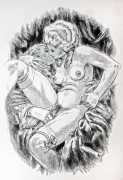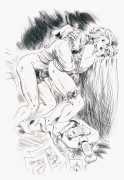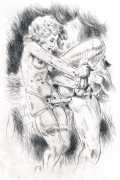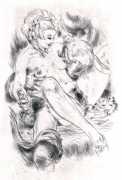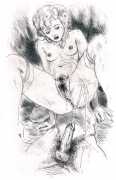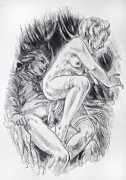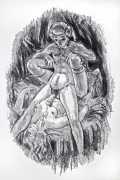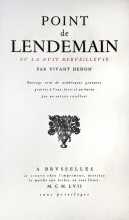 Denon’s Point de lendemain (No Tomorrow), written in 1777, is the archetypal story of a one-night liaison, now rightly recognised as a literary masterpiece. In just thirty or so pages, the narrative perfectly captures the libertine essence of the French eighteenth century. With Point de lendemain, Denon celebrates the subtle seductions and the intense voluptés of vicomtes and marquises, set in rococo landscapes à la Watteau and lavish interiors worthy of Duc de Barry. Point de lendemain is as graceful as a painting by Fragonard and as sensuous as one of Boucher’s, as sharp and well-written as a Voltairian epigram.
Denon’s Point de lendemain (No Tomorrow), written in 1777, is the archetypal story of a one-night liaison, now rightly recognised as a literary masterpiece. In just thirty or so pages, the narrative perfectly captures the libertine essence of the French eighteenth century. With Point de lendemain, Denon celebrates the subtle seductions and the intense voluptés of vicomtes and marquises, set in rococo landscapes à la Watteau and lavish interiors worthy of Duc de Barry. Point de lendemain is as graceful as a painting by Fragonard and as sensuous as one of Boucher’s, as sharp and well-written as a Voltairian epigram.
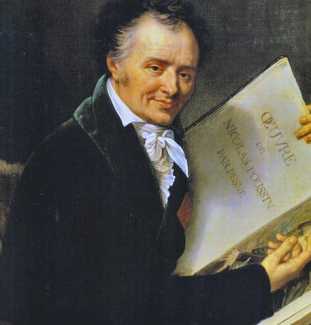 Its author, Dominique Vivant, Baron Denon (1747–1825) was a man of many talents – artist, writer, diplomat, author and archaeologist. He was appointed as the first director of the Louvre museum by Napoleon after the Egyptian campaign of 1798–1801, and is commemorated in the Denon Wing of the modern museum and in the Dominique-Vivant Denon Research Center. His two-volume Voyage dans la basse et la haute Egypte (Journey in Lower and Upper Egypt) of 1802 was in many ways the foundation of modern Egyptology.
Its author, Dominique Vivant, Baron Denon (1747–1825) was a man of many talents – artist, writer, diplomat, author and archaeologist. He was appointed as the first director of the Louvre museum by Napoleon after the Egyptian campaign of 1798–1801, and is commemorated in the Denon Wing of the modern museum and in the Dominique-Vivant Denon Research Center. His two-volume Voyage dans la basse et la haute Egypte (Journey in Lower and Upper Egypt) of 1802 was in many ways the foundation of modern Egyptology.
Jean Traynier’s explicit illustrations, very like his Cydalise portfolio, show the lovers’ bodies entwined in short-lived but ecstatic passion.
The Traynier-illustrated Point de lendemain was published in Brussels, ‘Chez l’imprimeur, se trouve derrière le marché aux herbes, au vase fleuri’ (at the printer’s premises to be found behind the herb market at the sign of the flower-decorated vase); the numbered limited edition was 150 copies.


